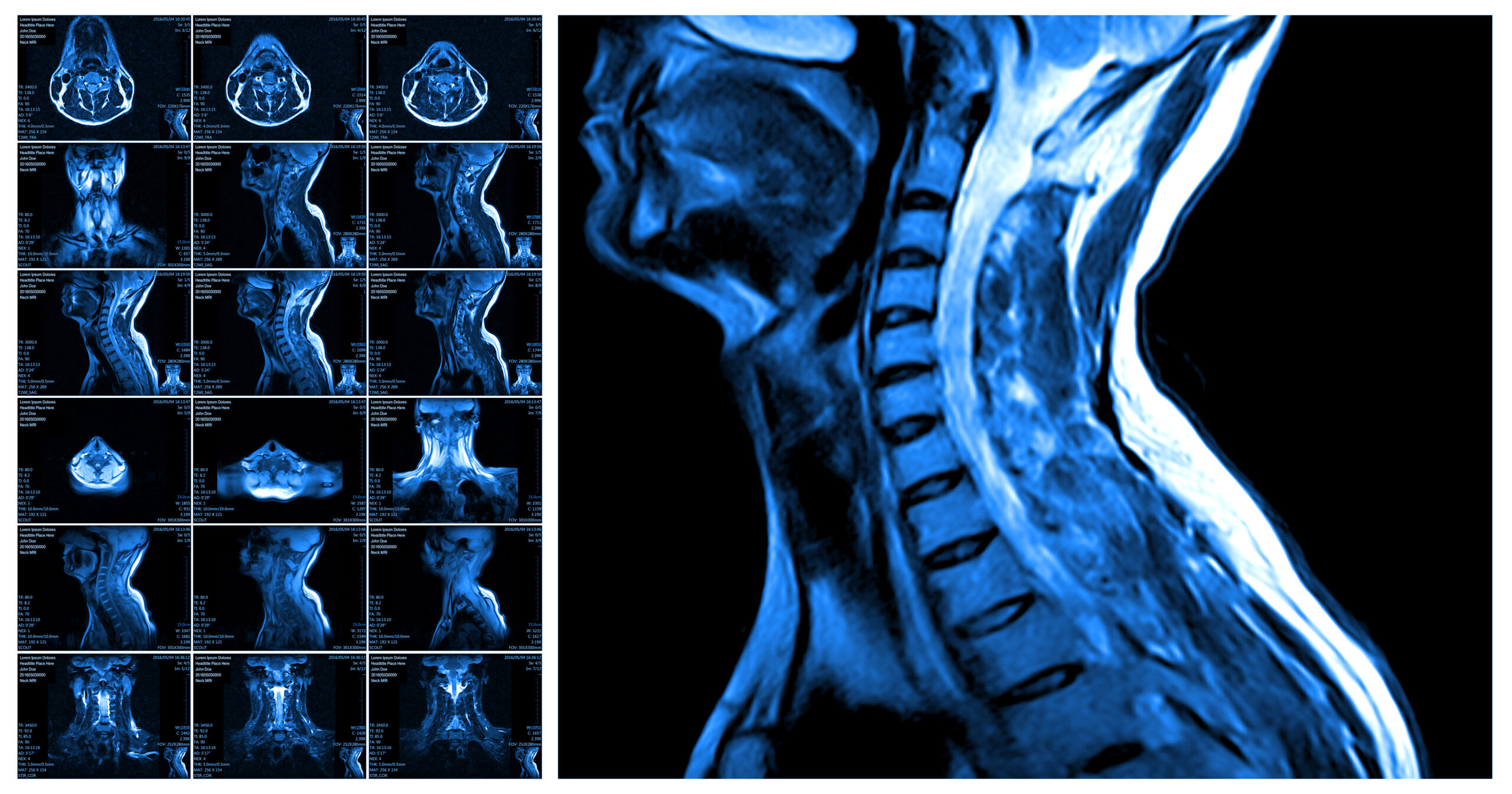Cervical Spondylotic Myelopathy (CSM) is the most common spinal cord disorder in persons over 55 years of age. It’s caused by age-related changes in the spine’s structure, leading to spinal cord compression. CSM can result from various degenerative changes, including intervertebral disc dehydration, bulging, or herniation, ligament hypertrophy, and bone spur formation.
Congenital Central Canal Narrowing refers to individuals born with a narrower spinal canal. When combined with CSM, this pre-existing narrowing can exacerbate the severity of the symptoms and may require earlier intervention.
Anatomy and Pathophysiology
The cervical spine is composed of seven vertebrae (C1-C7) that protect the spinal cord and support the head’s weight and movements. In the center of each vertebra is the central canal, through which the spinal cord passes.
Degenerative changes like disc degeneration, facet joint osteoarthritis, and ligamentum flavum thickening can reduce the space in the spinal canal, compressing the spinal cord and nerve roots. Congenitally narrow canals leave less room for these changes before compression occurs, leading to earlier and potentially more severe neurological deficits.
Symptoms
The hallmark of CSM includes:
- Numbness, weakness, or tingling in the arms, hands, legs, or feetLack of coordination in the hands, arms, and legsWalking and balance difficultiesNeck pain or stiffness
Diagnosis
Diagnosis involves a combination of patient history, physical examination, and imaging studies. MRI is the gold standard for visualizing spinal cord compression, while CT scans can help assess bony structures. The congenital narrowing may be evident on these imaging studies as a reduced anteroposterior diameter of the spinal canal.
Treatment
Treatment for CSM can be conservative or surgical. Conservative treatments include medications, physical therapy, and cervical traction. However, surgery is often recommended when congenital narrowing is involved, especially if symptoms are severe or worsening. Surgical options aim to decompress the spinal cord and may include:
- Anterior cervical discectomy and fusion (ACDF)Cervical corpectomyPosterior laminoplastyPosterior laminectomy with or without fusion
Outcomes and Considerations
Early diagnosis and treatment are crucial for improving neurological outcomes. Individuals with congenital canal narrowing need careful monitoring for the onset of CSM symptoms, given their predisposition to earlier onset and rapid progression.
Conclusion
Congenital central canal narrowing with CSM presents a complex clinical scenario. Management requires a nuanced approach that considers the unique anatomical and pathological aspects of each patient. As research progresses, there is hope for more tailored and effective treatments for those affected by this condition.
